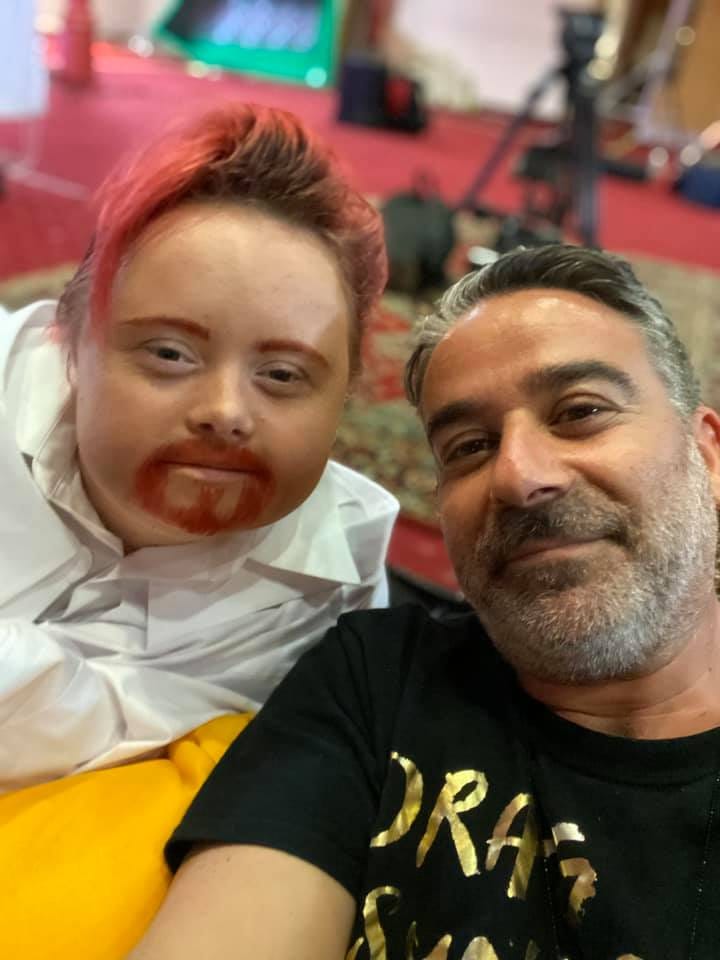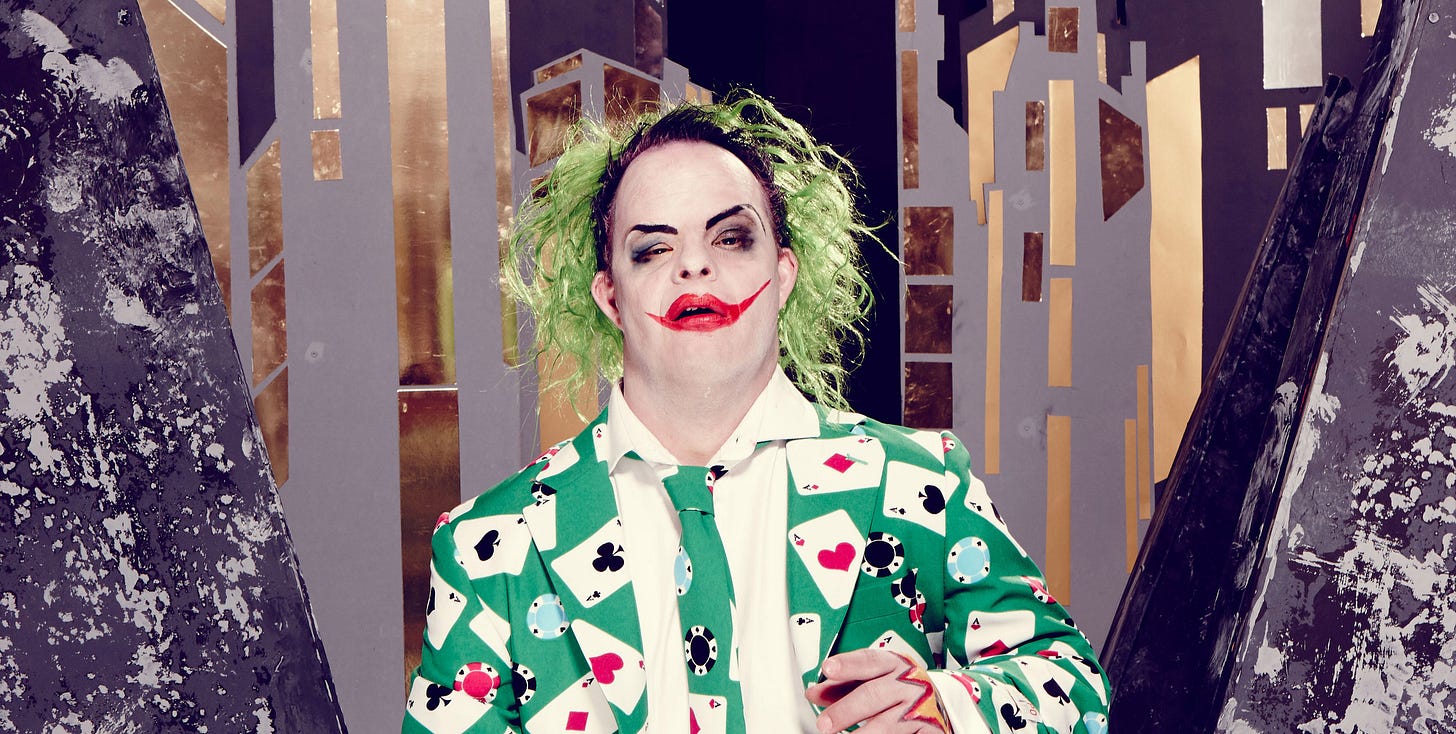Does this article's topic make you squeamish too?
#DragSyndrome isn't a new act, but it is a dangerous low in cultural tastes and ethical standards.

This weekend my latest article in American Greatness was published examining the #DragSyndrome troupe of cross dressing performers with Down Syndrome and their coverage on TikTok and on several media outlets. If you haven’t already, make sure to read the article here. While I’m always glad to be featured by AG and read the reactions, this story hit very close to home to the degree that I wasn’t comfortable sending it with some of my personal acquaintances, at least not without expanding on some of the issues explored in the article and my own experience with disabled adults. There are multiple adults with special needs in my family, including a cousin with Down Syndrome, as well as people within my family and social circle that work in special education settings with children and adults. In high school my older brother and I volunteered at a group for teens with special needs. There are multiple families in our synagogue with Down Syndrome kids, and during this Passover holiday I had occasion to see some of them. They invariably want to enjoy family and social events, which is why I understand the need to extend to them the compassion of encouraging their interests and abilities.
When my wife first told me about #DragSyndrome being a TikTok phenomenon, I knew that most readers would intuitively express the fact that this is wrong. For those that come from a religious background the reasons for this are self-evident as the promiscuous and flamboyant aspects of drag performance are themselves seen as immodest and disgusting. But being a free speech advocate and civil libertarian often forces me to accept the freedom of others to do things that I find offensive, distasteful and wrong. This for me seemed beyond wrong. There are many topics that I’ve covered in writing or on video for the past five years that would fit into those categories, so why should this be any different even with my personal connection to the topic?
I’ll try to explain in this way. It’s always been perceived to be extremely mean spirited to use special needs adults in entertainment settings that exploit their weaknesses, yet somehow there are those that seem to succeed at it. Gary Loudermilk aka “Gary the Retard” and Lester Green aka “Beetlejuice”, two people with pronounced intellectual disabilities, were considered core members of the Howard Stern Show “Wack Pack”. Bobby and Peter Farrelly, the brothers behind such comedies as There’s Something About Mary and The Ringer, made liberal use of characters played by real life special needs actors. My wife and I enjoy the British TV show Derek starring Ricky Gervais portraying a special needs adult working in a cash-strapped nursing home.
Drag vs. simple cross dressing

#DragSyndrome is obviously not the only example of the debauched and nihilistic cultural reality that our postmodern era features. Daily there are examples of children’s shows using drag performers attempting to normalize sexualized entertainment for children. Notably, cross-dressing in and of itself is not necessarily sexual. The character “Church Lady” played by Dana Carvey on Saturday Night Live was a take on religious fanaticism; it had very little to do with sex. “Coffee Talk” featuring Carvey’s castmate Mike Myers was a spoof of his real life Jewish mother-in-law and her obsession with Barbara Streisand. But even so SNL, based on its late night show time and TV-MA, has always been marketed to and target for adults. These were comedic caricatures by male performers of personality quirks of certain members of the opposite sex. Drag performances are a more specific type of cross-dressing entertainment where the performer creates a sexualized caricature of members of the opposite sex that exaggerates certain clothing or body parts in a risqué sexual way. Not all drag performers are homosexual, the Australian drag queen Barry Humphries aka “Dame Edna” has been married to four different women, but the art form is inherently connected to gay culture.
One of the more amusing reactions to my main article was by a user who claimed that it was hypocritical to criticize episodes like this of drag performance when over the same weekend congressman Madison Cawthorne (R-NC) had photos leaked to the media where he was wearing women’s clothing while two women flanking him on either side grinned at the camera. The commenter was claiming that Cawthorne and/or his supporters and other conservatives are repressing their own sexuality. In any event just as my article was not a political issue and concerns a performance based in the UK anyway, I find it ironic that many who encourage total sexual liberation are also quick to shame Cawthorne, who is wheelchair bound, for allegedly being in the closet. His response was that this was part of an organized game that he participated on while taking a vacation cruise several years before running for office.
Everyone is entitled to the opinion of whether or not comedic takes on disabled people like those of Stern’s or the Farrelly Bros. are in appropriate taste, especially since the performers are all willing and consenting participants in the act. The same rationale would be used by the director of #DragSyndrome Daniel Vais (see video above) in explaining why #DragSyndrome performers enjoy their work: “It's a platform for them to express themselves more than they can do in regular art forms or dance or theater. It gives them the space to be fierce - to be sexy - to be wild.” Vais also is the director of the art exhibit “Radical Beauty Project” that features Down Syndrome adults in artistic photographic poses. The project’s main patron is retired psychedelic rock musician Robert Wyatt.

While researching #DragSyndrome’s background I discovered to my chagrin that Vais was Israeli. I had suspected as much from his accent. According to the Yated, an Israeli nonprofit resource for Down Syndrome patients, among the school aged population alone there are 3,000 cases in Israel. In the UK, where Vais’s project is headquartered, there are 12,000.
It’s not as if the #DragSyndrome performers are being directly assaulted and tortured as happened to a special needs teen in Chicago in a widely publicized 2017 case. In that instance four teens specifically targeted him for their violent wrath, which is not the case here. Also, I doubt that staff of #DragSyndrome like Vais are ridiculing the performers in the same way that the Howard Stern Show did.
Is there some other situation that is also inappropriate where a comparison can be made? There is such a case, that of a Down Syndrome teen that wants to be a boxer. This was the subject of a British short dramatic film called Fighter (see above) in which an overbearing father encourages his disabled son to fight to enter the ring over the objections of his other son and daughter. Rather than pose the subject as being cut-and-dry, it shows the real moral dilemma of a person with daunting limits aspiring to prove himself in a sport that is likely not in the interests of his health. Only the most absurd person would argue that the only barrier that should be between a mentally person and a blood sport, even a legally sanctioned and supervised one, should be their verbal consent. A real life boxing programme exists for disabled adults in Gloucestershire, UK, but as one would expect it limits the activities to the more fun aspects of the training such as pad work and heavy bag training at an appropriate level. Likewise, a special needs adult should not be inserted into a situation where they are being used in a sexual manner to the entertainment of spectators.
Should this even have to be said?
As children, I remember we would visit our relatives in Israel and meet our disabled cousin along with all of her brothers and sisters. While she was always eager to interact with other children like us, even if we also had a Hebrew vs. English language barrier, there were certain games that we understood or were told by our parents would be inappropriate to include her in such as dangerous playground stunts. As we got older, no matter how much my aunt and uncle tried to keep her active and involved in life, it was transparently obvious that she could not have the same experiences as her older siblings, such as marriage and children.
As with using Down Syndrome people in violent performances, I would argue that putting them into overly sexual situations is just as exploitative if not more. #DragSyndrome was not Vais’s first choreography project with special needs performers; he previously had an interpretive dance show called “The Love Spotters”. In that time he actually described a performer named Diane starting out dancing in a “very needy - very unhealthy way”. How did Vais’s personal judgment go from being able to recognize that some modes of self expression may be inappropriate for a disabled person, to the reality of today where he is the mind behind a project that so uses special needs adult for a perverted purpose as #DragSyndrome? It could be that he simply saw opportunities and took them. OR, is it that perhaps people like Vais that live in an artistic atmosphere that emphasizes breaking taboos and pushing boundaries sometimes lack any internal thought process that acts as a moral or ethical mooring that says “maybe this is too much?”. Are they addicted to the praise of their patrons or the outrage of their critics? Either way, this is extremely unhealthy for all involved.
Watch my video commentary on this below:
YOUTUBE:
Thank you for reaching the end. Please make sure to comment below and follow my content on any of these platforms:
Video channels:
Rumble: https://rumble.com/user/ChefLeopard
Bitchute: https://www.bitchute.com/video/cxH55qqGN0Ub/
Odysee: https://odysee.com/@BoldLikeALeopard:7Social media:
Minds.com: https://www.minds.com/ChefLeopard/
Gab: https://gab.com/StarScream85
Telegram: https://t.me/razorsharpreport
Gettr: https://gettr.com/user/razorraymccoy



